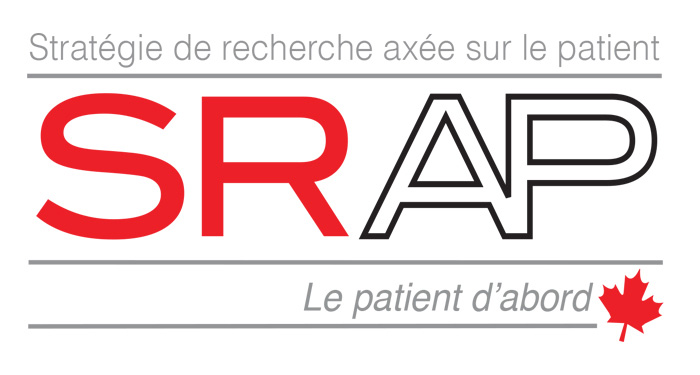Cet épisode fait partie de la série de balados du R1Q Première ligne. Abonnez-vous dans le Apple Podcasts, sur Spotify ou par YouTube Podcasts pour ne manquer aucun épisode!
Écoutez l’épisode ici >> (enregistré en mai 2025)
Déclaration de conflits d’intérêts : L’animatrice (Dre Emma Glaser), les invité-e-s (Jasmine Gaudet, Sarah-Ève Loiselle, Thomas Larente, Éloi Prévost) et l’équipe balado du R1Q n’ont aucun conflit d’intérêt à déclarer.

Animatrice : Dre Emma Glaser, MD-MSc CMFC, médecin de famille, GMF-U Bordeaux Cartierville
Invité-e-s :
- Jasmine Gaudet, résidente, GMF-U Sacré-Cœur.
- Thomas Larente, résident, GMF-U Sacré-Cœur.
- Sarah-Eve Loiselle, résidente, GMF-U Sacré-Cœur.
- Éloi Prévost, résident, GMF-U Sacré-Cœur.
Objectifs :
- Déterminer la proportion des patients se présentant pour des douleurs rétro-sternales (DRS) qui développeront un évènement coronarien indésirable (MACE);
- Établir la réelle performance des tests de stratification cardiologiques (sensibilité, spécificité, VPP, VPN);
- Évaluer l’impact des tests de stratification cardiologiques sur les issues centrées sur le patient;
- Présenter des scores cliniques (p. ex. le HEART score) qui permettent de stratifier cliniquement les patients avec des DRS;
- Évaluer si une prise en charge invasive de la MCAS (revascularisation) améliore les issues centrées sur le patient.
Messages clés :
- Les patients avec des DRS qui ont eu une investigation initiale négative, ou les patients dont l’histoire nous indique qu’ils ne sont pas en SCA (symptômes résolus depuis >24h) sont à très faible risque d’évènements coronariens (bien souvent en bas de 1% même si des facteurs de risque sont présents).
- Les tests de stratification cardiologiques sont peu performants (faible sensibilité/spécificité) pour détecter la maladie coronarienne. Ils sont associés à un très haut taux de faux positifs et même de faux négatifs surtout en contexte de faible prévalence.
- Le coroscan semble être plus sensible pour détecter la MCAS, mais potentiellement au prix d’un « surdiagnostic » significatif. Son réel bénéfice pour les patients reste à démonter.
- De nombreux scores cliniques, notamment le HEART score, nous permettent de stratifier les patients avec des DRS de la même façon, voire de façon plus efficace, que les épreuves d’efforts.
- Il n’y a pas de bénéfices démontrés à traiter la maladie coronarienne stable de façon invasive (revascularisation) comparativement à une prise en charge médicale.

Cet épisode est accompagné d’une capsule de formation accréditée de TopMF (Transfert optimisé des publications en médecine de famille).
Si vous n’êtes pas déjà abonné à TopMF, profitez du rabais sur les frais d’abonnement disponible pour les membres du R1Q.
Références
- Foy AJ, Liu G, Davidson WR, Jr., Sciamanna C, Leslie DL. Comparative effectiveness of diagnostic testing strategies in emergency department patients with chest pain: an analysis of downstream testing, interventions, and outcomes. JAMA Intern Med. 2015;175(3):428-36.
- Gulati M, Levy PD, Mukherjee D, Amsterdam E, Bhatt DL, Birtcher KK, et al. 2021 AHA/ACC/ASE/CHEST/SAEM/SCCT/SCMR Guideline for the Evaluation and Diagnosis of Chest Pain: A Report of the American College of Cardiology/American Heart Association Joint Committee on Clinical Practice Guidelines. Circulation. 2021;144(22):e368-e454.
- Cullen L, Parsonage WA, Greenslade J, Lamanna A, Hammett CJ, Than M, et al. Comparison of early biomarker strategies with the Heart Foundation of Australia/Cardiac Society of Australia and New Zealand guidelines for risk stratification of emergency department patients with chest pain. Emerg Med Australas. 2012;24(6):595-603.
- Paré DP, F. . Ai-je vraiment besoin d’une épreuve d’effort pour cette DRS ? TOP MU2019. p. https://topmu.ca/courses/tu-03-7-epreuve-deffort/.
- Morgenstern J. Stress Test Evidence: Introduction First10EM2019 [Available from: https://first10em.com/stress-test-evidence-intro/.
- Helman AM, J., Spiegel R. Cardiac Stress Testing After Negative Workup for MI [Internet]; 2019 [cited December 2024]. Podcast. Available from: https://emergencymedicinecases.com/cardiac-stress-testing/
- Cordoba G, Schwartz L, Woloshin S, Bae H, Gøtzsche PC. Definition, reporting, and interpretation of composite outcomes in clinical trials: systematic review. Bmj. 2010;341:c3920.
- Shepshelovich D, Yahav D, Rome DR, Goldvaser H, Richter I, Hermann EA, et al. Heterogeneity of Primary Outcomes in Large Atherosclerotic Cardiovascular Disease Trials Published in Prominent Medical Journals. JAMA Intern Med. 2025.
- Napoli AM. The association between pretest probability of coronary artery disease and stress test utilization and outcomes in a chest pain observation unit. Acad Emerg Med. 2014;21(4):401-7
- Lim SH, Anantharaman V, Sundram F, Chan ES, Ang ES, Yo SL, et al. Stress myocardial perfusion imaging for the evaluation and triage of chest pain in the emergency department: a randomized controlled trial. J Nucl Cardiol. 2013;20(6):1002-12.
- Morgan D. Testing Wisely : disease risk calculator 2021 [December 2024]. Available from: https://calculator.testingwisely.com/.
- Fihn SD, Gardin JM, Abrams J, Berra K, Blankenship JC, Dallas AP, et al. 2012 ACCF/AHA/ACP/AATS/PCNA/SCAI/STS Guideline for the diagnosis and management of patients with stable ischemic heart disease: a report of the American College of Cardiology Foundation/American Heart Association Task Force on Practice Guidelines, and the American College of Physicians, American Association for Thoracic Surgery, Preventive Cardiovascular Nurses Association, Society for Cardiovascular Angiography and Interventions, and Society of Thoracic Surgeons. J Am Coll Cardiol. 2012;60(24):e44-e164.
- Hermann LK, Newman DH, Pleasant WA, Rojanasarntikul D, Lakoff D, Goldberg SA, et al. Yield of routine provocative cardiac testing among patients in an emergency department-based chest pain unit. JAMA Intern Med. 2013;173(12):1128-33.
- Sandhu AT, Heidenreich PA, Bhattacharya J, Bundorf MK. Cardiovascular Testing and Clinical Outcomes in Emergency Department Patients With Chest Pain. JAMA Intern Med. 2017;177(8):1175-82.
- Skoien W. Diagnostic Yield of Routine Stress Testing in Low and Intermediate Risk Chest Pain Patients Under 40 Years: A Systematic Review. Crit Pathw Cardiol. 2016;15(3):114-20.
- Divakaran S, Cheezum MK, Hulten EA, Bittencourt MS, Silverman MG, Nasir K, et al. Use of cardiac CT and calcium scoring for detecting coronary plaque: implications on prognosis and patient management. Br J Radiol. 2015;88(1046):20140594
- Douglas PS, Hoffmann U, Patel MR, Mark DB, Al-Khalidi HR, Cavanaugh B, et al. Outcomes of anatomical versus functional testing for coronary artery disease. N Engl J Med. 2015;372(14):1291-300.
- Hoffmann U, Ferencik M, Udelson JE, Picard MH, Truong QA, Patel MR, et al. Prognostic Value of Noninvasive Cardiovascular Testing in Patients With Stable Chest Pain: Insights From the PROMISE Trial (Prospective Multicenter Imaging Study for Evaluation of Chest Pain). Circulation. 2017;135(24):2320-32.
- CT coronary angiography in patients with suspected angina due to coronary heart disease (SCOT-HEART): an open-label, parallel-group, multicentre trial. Lancet. 2015;385(9985):2383-91.
- Newby DE, Adamson PD, Berry C, Boon NA, Dweck MR, Flather M, et al. Coronary CT Angiography and 5-Year Risk of Myocardial Infarction. N Engl J Med. 2018;379(10):924-33.
- Frisoli TM, Nowak R, Evans KL, Harrison M, Alani M, Varghese S, et al. Henry Ford HEART Score Randomized Trial: Rapid Discharge of Patients Evaluated for Possible Myocardial Infarction. Circ Cardiovasc Qual Outcomes. 2017;10(10).
- Backus BE, Six AJ, Kelder JC, Bosschaert MA, Mast EG, Mosterd A, et al. A prospective validation of the HEART score for chest pain patients at the emergency department. Int J Cardiol. 2013;168(3):2153-8.
- Mahler SA, Hiestand BC, Goff DC, Jr., Hoekstra JW, Miller CD. Can the HEART score safely reduce stress testing and cardiac imaging in patients at low risk for major adverse cardiac events? Crit Pathw Cardiol. 2011;10(3):128-33.
- Anwar I, Sony D. HEART Score: Prospective Evaluation of Its Accuracy and Applicability. Indian J Crit Care Med. 2024;28(8):748-52.
- Fanning JP, Nyong J, Scott IA, Aroney CN, Walters DL. Routine invasive strategies versus selective invasive strategies for unstable angina and non‐ST elevation myocardial infarction in the stent era. Cochrane Database of Systematic Reviews. 2016(5).
- Stergiopoulos K, Brown DL. Initial coronary stent implantation with medical therapy vs medical therapy alone for stable coronary artery disease: meta-analysis of randomized controlled trials. Arch Intern Med. 2012;172(4):312-9.
- Khan SU, Singh M, Lone AN, Khan MS, Fatima U, Saad AB, et al. Meta-analysis of long-term outcomes of percutaneous coronary intervention versus medical therapy in stable coronary artery disease. Eur J Prev Cardiol. 2019;26(4):433-6.
- Maron DJ, Hochman JS, Reynolds HR, Bangalore S, O’Brien SM, Boden WE, et al. Initial Invasive or Conservative Strategy for Stable Coronary Disease. N Engl J Med. 2020;382(15):1395-407.
- Mancini GB, Gosselin G, Chow B, Kostuk W, Stone J, Yvorchuk KJ, et al. Canadian Cardiovascular Society guidelines for the diagnosis and management of stable ischemic heart disease. Can J Cardiol. 2014;30(8):837-49.








